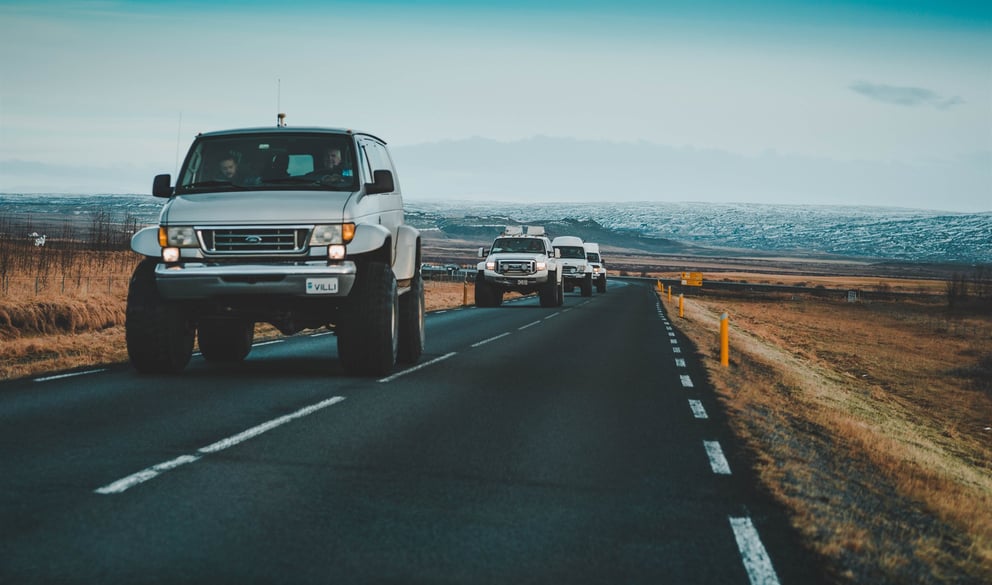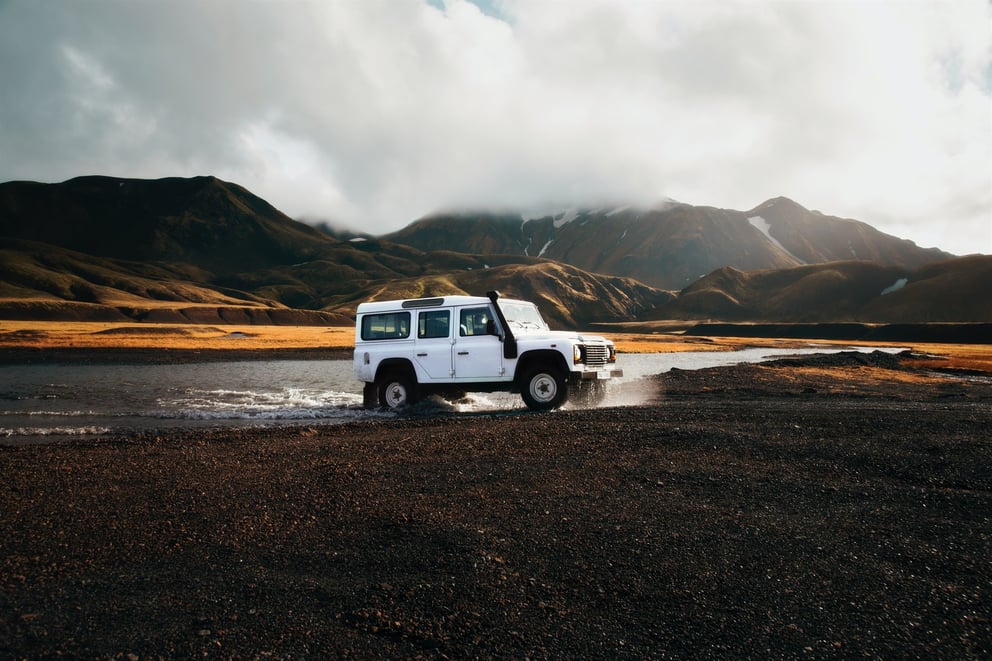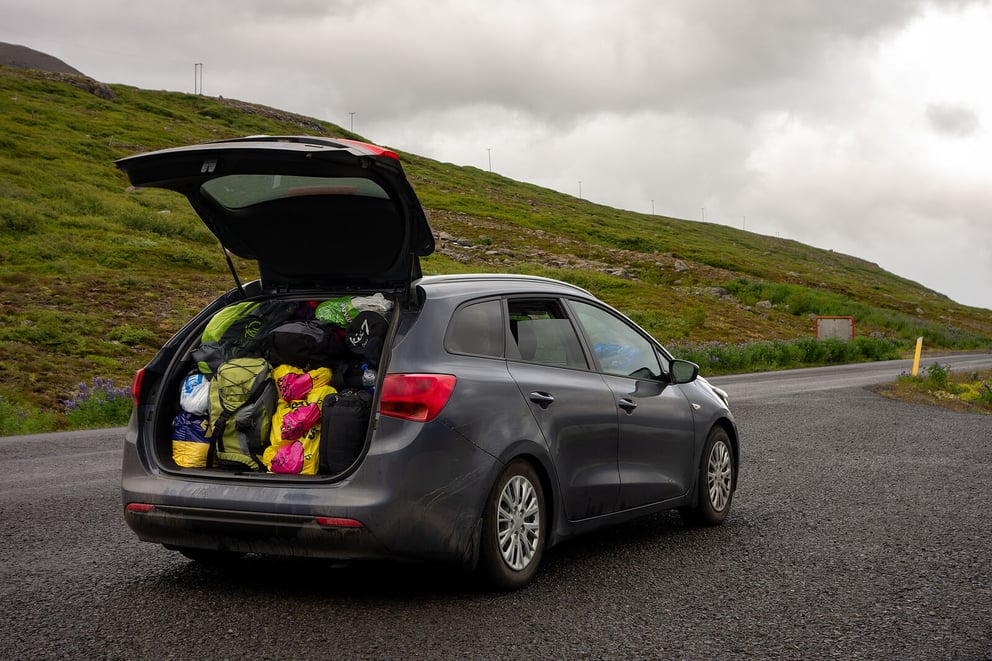How to Rent a Car in Iceland
Congratulations! You’ve just booked a thrilling trip to Iceland. We can fully understand your excitement and we know you’re itching to plan every single moment of your time in the land of ice and fire. But where should you start?
One of the most common questions amongst those visiting Iceland is whether they should consider hiring a car. If you’re looking to explore the wonders of our beautiful country, then the answer is a resounding yes! So once you’ve arranged flights and accommodation, the next item on your checklist should be to arrange a car for your time in Iceland.
The first thing you need to know is that public transport in Iceland is fairly limited. When in Reykjavík you can easily get around without access to a car, however, if you want to get out and experience anything beyond the capital city or truly explore the magnificent Icelandic wilderness, there are definitely clear benefits of renting a car in Iceland.

Where to Start - Iceland Car Rental FAQ
First things first, there are a few key rules to follow when hiring a car for your trip to Iceland, outlined below.
What are some important things to know about renting a car in Iceland?
- Only rent from a trusted company with positive reviews
- Ensure the company has plenty of availability for your dates of travel
- Find out if they offer airport transfers to make collecting and dropping off your car easier
- Shop around and make sure you’re getting a fair price
What are the Car Rental Requirements in Iceland?
In order to hire a car in Iceland, there are a few requirements you must meet. These requirements act as an assurance for both yourself and the hire company. Find out these requirements and how to make the most of your vehicle in Iceland.
How Old Do You Have to Be to Rent a Car in Iceland and What License Do You Need?
As a rule, you must be 20 years old or older to hire a car in Iceland. You do not need to have an international driver’s license, but you must have a valid license from your home country with full driving privileges and you must have held it for at least 12 months. This means that a driving permit or provisional driving license will not be adequate. In addition, if you want to rent an SUV or larger vehicle, the age requirement for renting a car in Iceland is 23.
Check out our guide on Driving Age in Iceland to learn more about the regulations.
What are the insurance requirements for renting a car in Iceland?
You’ll also be required to have minimum car insurance for your vehicle. The minimum that is accepted is third-party liability insurance, which is normally included for free with your rental agreement. But just because this is included doesn’t mean that it’s suggested that you go with the minimum.
There is additional coverage you can choose to opt for, and we’d certainly suggest that you consider this. It’s important to bear in mind that Iceland is a country of extreme weather - and not just snow. Wind can churn up significant amounts of dirt and gravel that can leave your vehicle more damaged than you might imagine. Here’s a breakdown of some of the different types of additional coverage you can opt for:
- Gravel Insurance; driving on the F-Roads and in the highlands, your car can get damaged from loose gravel, especially from the cars in front of you.
- Sandstorm Protection; although this is not a regular occurrence, if you do encounter a sandstorm this can damage your car.
- Zero Liability; most insurance providers will only cover you up to a certain cost of damage as standard. If you have a serious accident you could be left with a hefty bill.
When collecting your car, make sure to speak to a representative, tell them about the types of areas you plan to drive and they can advise you on any additional insurance you may want to take out. Remember, if you don’t and the car gets damaged, you’ll have to pay out of pocket for any repairs, so it’s better to be safe than sorry.

What Kind of Car Should I Rent in Iceland?
Because Iceland is a country with such varied landscapes, you’re likely to encounter a lot of different terrains depending on your plans.
If you’re planning to stick to the areas directly around Reykjavík or paved roads like the Golden Circle and Ring Road, you’ll be fine with just about any type of car. Small city cars with no 4x4 capabilities will do just fine, however, if you plan to head onto any unpaved roads or tackle the Highlands, you’ll need a 4x4. This table will help you determine the best type of car to rent based on your plans.
|
Type of Rental |
Main Roads? |
F Roads? |
Highlands |
All Weather? |
|
Car |
Yes |
No |
No |
No |
|
Minibus |
Yes |
No |
No |
No |
|
SUV |
Yes |
Yes |
Yes |
Yes |
Find out more about How to Select the Right Car for Your Iceland Trip.
How to Get Around Iceland By Car? – GPS & Maps
A big concern for people thinking about car rental when heading to Iceland is whether or not they will be able to find their way around. But getting around Iceland by car is actually a lot more straightforward than you might initially think. The main Ring Road that runs around the outside of Iceland can actually take you to most of the famous attractions around the country.
Cell phone coverage in Iceland is actually also quite good, so you can use your phone for directions while on the road. You can also save routes on Google Maps for offline viewing too which can be handy to save data and in case signal coverage drops off. Many rental cars are also available with built-in GPS so you don’t have to worry about finding your way around.
Are There Any Driving Hazards in Iceland?
Many areas of Iceland are rural and remote and you are likely to encounter some driving hazards that you might not have come across elsewhere around the world. One of the best tips is to take caution when driving in Iceland to make sure that you spot any hazards you might encounter before you come to them. Some of the top hazards include;
Single-lane bridges and tunnels; there are a few of these dotted around Iceland and they can be confusing for visitors. If traffic is coming in the opposite way, then you must pull over to the designated area and wait until the way through is clear.
Rivers and Creeks; some of the roads in Iceland are intercepted by rivers and creeks that can be treacherous to cross. If you don’t know how deep it is or haven’t seen a car cross, then don’t attempt it to be safe.
Sheep; one of the most common things you see when travelling around Iceland is the abundance of free-roaming sheep, horses and goats. They can sometimes occupy the road so take caution.
Gravel Roads; some of these roads can be loosely gravelled and deeply rutted, so take extra caution when travelling on gravel roads around Iceland. Travel slowly and make sure you are vigilant.

Tips and Resources
Make pick-up and drop-off simple: Choosing a hire car company with an office located at Keflavik Airport makes your pick-up and drop-off process simple. You can find us at Keflavík Airport with a quick ride on the shuttle after you arrive and can reverse the process when you leave Iceland.
Be a kind driver: It’s important to follow local laws and customs when driving in Iceland. Make sure to brush up on driving etiquette in Iceland.
Observe local road laws: Like any country, the traffic and road laws in Iceland may differ from those in your home country. Following laws and obeying signage can help you avoid speeding tickets and other fines. Make sure you don’t pull over and stop alongside the road to take photos and admire the scenery, as this is illegal in Iceland. Instead, you must stop at designated parking areas or lookout sites to do so. It’s also important to be aware of parking rules and regulations in Reykjavík.
Don’t get caught out when it comes to fuel: In some areas of Iceland, fuel stations can be few and far between. Plan ahead to make sure you’re not caught out.
Be prepared for the weather: Driving in adverse weather conditions can sneak up on you in Iceland. Read up on how to drive in snow in Iceland.
Make the most of your time in Iceland with a road trip: Iceland’s open roads, stunning scenery, and immersive wilderness make it the perfect place for a road trip. Plan a road trip you’ll never forget to make the most of your visit.
We’re the experts when it comes to all things driving in Iceland. If it’s time to hire your car in Reykjavík, our fleet is ready and waiting. Let’s hit the road!
Oh, do you have more questions about car rental in Iceland? Visit our FAQ page!

